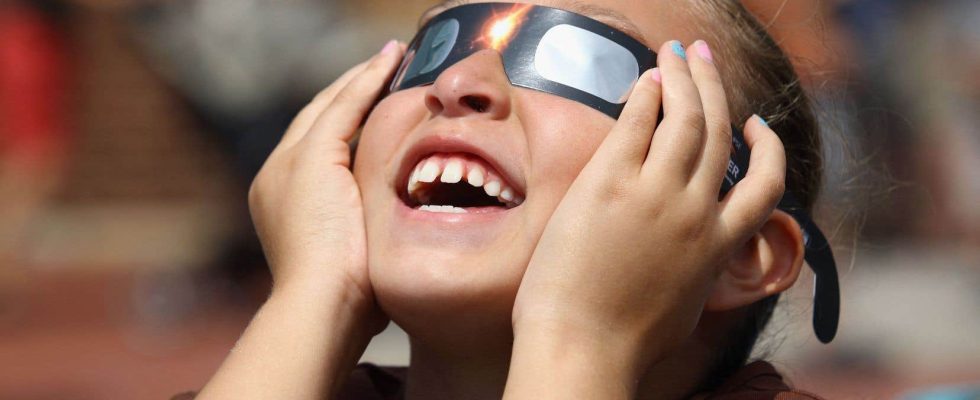Several schools in Quebec being closed today for fear of not being able to guarantee the safety of their students during the solar eclipse, how can we support little ones so that they can safely enjoy this spectacular event? The answers to your questions in four parts.
What to expect in terms of weather conditions?
Environment Canada is forecasting “ideal” weather conditions on Monday, both in terms of cloud clearance and temperature. This should also be around 15 degrees in Montreal and its surroundings, and the weather promises to be sunny in southern Quebec, the path of the total eclipse.
It would nevertheless be wise to keep coats, hats, scarves and mittens close at hand, because the temperature may temporarily drop a few degrees before, during and after the Moon passes in front of the Sun. It will stabilize again afterwards.
Environment Canada mentions that, during the total eclipse of 1999 in Europe, the temperature dropped by three degrees in places for several minutes. Winds can also change direction sporadically.
What are the risks of watching the eclipse for its entire duration, even with safety glasses?
Direct observation of the eclipse can be done safely with protective glasses designed for this purpose. However, they must be worn at all times and properly, placed directly in front of and close to the eyes. Parents must ensure that direct rays of the Sun do not reach their little ones’ eyes, either from the top of the frames or from the sides.
During the period of complete darkness, which is safe, it is safe to view the eclipse with the naked eye. It is the phases which precede and succeed it which are dangerous for the eyes and during which protective glasses must be worn.
But be careful of counterfeits! To certify the conformity of the glasses to the ISO 12312-2 standard, it is important to check that the number is displayed on the frame. The name and address of the manufacturer should be given, as well as precautions for use and instructions for use.
What will be the most impressive moment?
In its “band of totality”, the solar eclipse will take place between 3:25 p.m. and 3:40 p.m. Over a width of approximately 200 km, part of the south of the province will be plunged into darkness at this time.
The time and duration of the total eclipse varies depending on location. In Montreal, the eclipse is scheduled to begin at 3:26 p.m. and will last nearly 1 minute 30 seconds. In Sherbrooke, it will start at 3:27 p.m. and last more than 3 minutes.
What to do with your glasses next?
It is recommended to keep your protective glasses on for the next upcoming partial solar eclipses, which will take place in March 2025 and August 2026 in the east of the country. You have to be careful not to damage them if you want to reuse them.
Otherwise, if you want to get rid of them, not all of the glasses can be recovered. The cardboard part can be recycled; simply detach the mount and put it in the recycling. Plastic lenses should be thrown in the trash.
